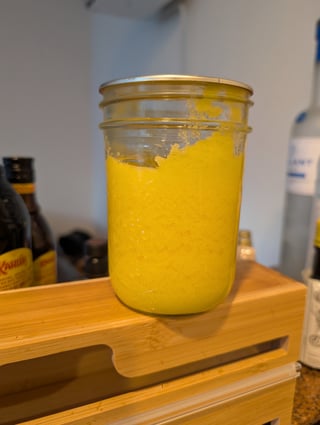I attempted to clarify butter for the first time. Based on the picture, I think there is to many solids in it. Is this butter clarified correctly ?
Here is what I did:
- Boiled 2 sticks of kerrygold unsalted for about 8 minutes ( stirring frequently to prevent burning )
- scooped of any solids while boiling
- let it rest for 30 minutes ( no other foam formed on top )
- carefully poured it trough cheescloth leaving the bottom parts behind
- let sit overnight to solidify
